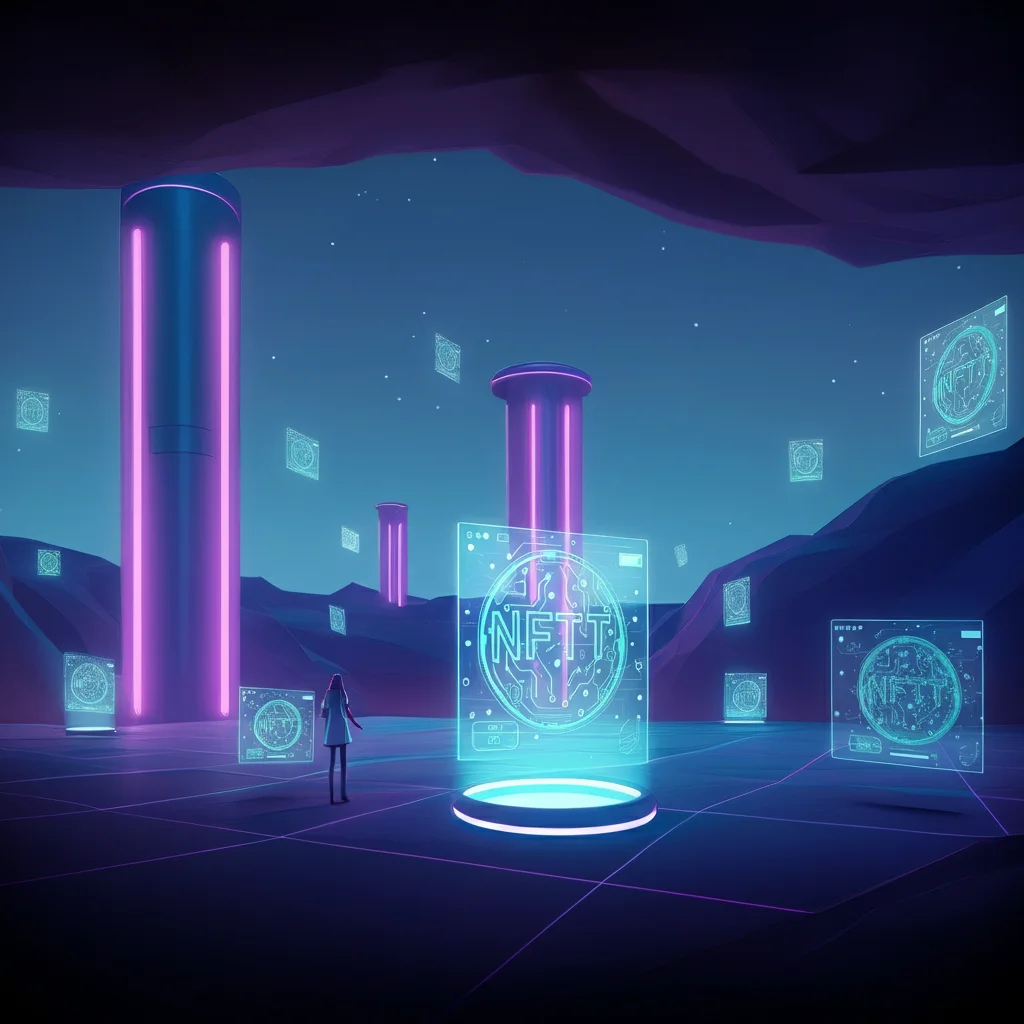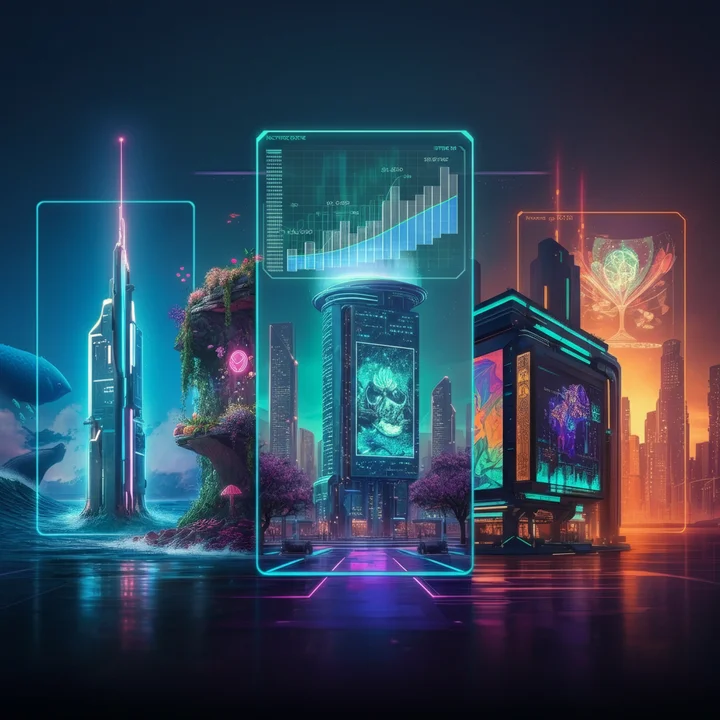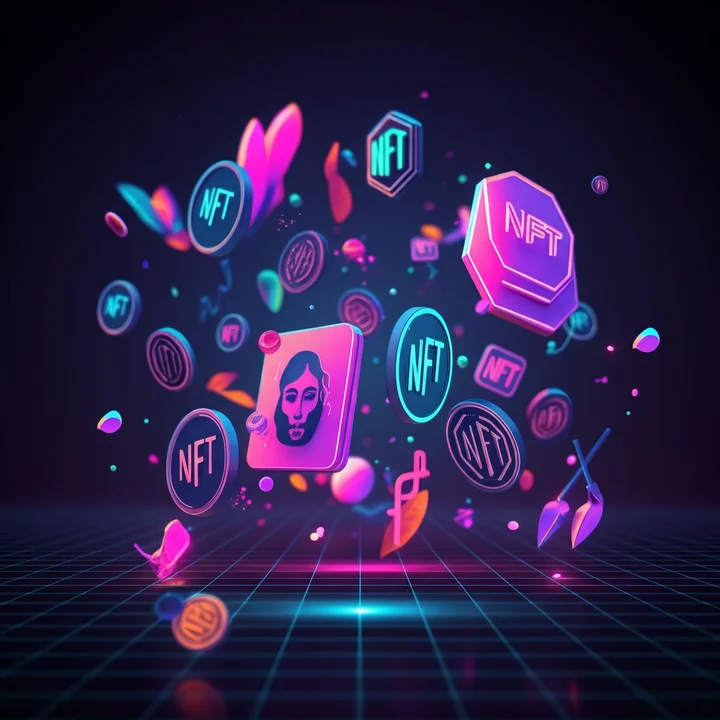The gaming world is undergoing a paradigm shift, thanks to the rise of NFTs and Web3 technologies. Once confined to collectibles and art, non-fungible tokens (NFTs) are now disrupting traditional game economies by introducing the concept of true ownership, player-driven marketplaces, and even real-world income opportunities for gamers.
This post dives into how NFTs are reshaping gaming, exploring real-world examples, their benefits, challenges, and what the future holds for this exciting intersection of blockchain and interactive entertainment.
What Are NFTs in Gaming?
NFTs, or non-fungible tokens, are unique digital assets stored on a blockchain. Within gaming, they represent anything from characters and in-game items to virtual land. Unlike traditional in-game assets, which are confined to a single ecosystem, NFTs belong to the player, giving them real-world value and enabling trade across platforms.
But what does this mean for game economies? Ownership and decentralization. These two principles are redefining the way gamers interact with the games they play.
Games Leveraging NFTs
Several games have embraced NFTs to create immersive and economically engaging experiences:
1. Axie Infinity
Arguably the most popular NFT-based game, Axie Infinity allows players to breed, trade, and battle tokenized virtual creatures called Axies. What sets it apart is its Play-to-Earn (P2E) mechanism, allowing players to earn cryptocurrency through gameplay. For many in countries like the Philippines, Axie Infinity has become a legitimate source of income.
2. The Sandbox
The Sandbox is a virtual metaverse where players can buy, build, and monetize virtual land and experiences using NFT-powered structures. Snoop Dogg, for example, created a virtual mansion in The Sandbox where fans can interact.
3. Illuvium
An open-world RPG game, Illuvium integrates NFTs to represent rare in-game beasts (Illuvials). Players collect and trade these creatures, introducing blockchain technology into compelling gameplay mechanics paired with breathtaking visuals.
4. Gods Unchained
This NFT-based trading card game allows players to truly own their cards. Unlike traditional card games locked into specific systems, Gods Unchained enables players to sell, trade, or simply hold their cards for value growth.
These examples showcase NFTs’ potential to innovate gaming models and affect how players interact with virtual worlds.
How NFTs Add Ownership to In-Game Assets
Traditionally, in-game assets—whether weapons, skins, or power-ups—are maintained within a game publisher's ecosystem. Players buy them, perhaps level them up, but fundamentally, they don’t “own” these assets. NFTs flip this script:
True Ownership: With NFTs, players own their in-game assets indefinitely. Even if a game shuts down or a publisher goes under, the items exist on the blockchain.
Customizable Markets: Since NFTs live on decentralized ledgers, players can trade their assets freely, creating a robust global marketplace beyond the game’s ecosystem.
Resale Value: NFTs retain (and potentially grow) their value, much like rare collectibles in the real world.
Imagine acquiring a rare sword in a fantasy-themed game and later selling it to someone in a space-themed shooter because both games recognize the item's NFT. This is exactly where Web3 gaming is heading.
Play-to-Earn Models and GameFi Explained
Play-to-Earn (P2E)
P2E gaming allows players to earn rewards in cryptocurrency or NFTs simply by playing. These games provide value-driven incentives, creating real economic opportunities. For example:
Completing challenges could earn players rare NFTs.
Mining resources in the game might reward cryptocurrencies.
Axie Infinity has set the P2E benchmark, turning gameplay into a job-like role for thousands of players.
GameFi
GameFi (short for “Game Finance”) marries decentralized finance (DeFi) mechanisms with gaming. Through staking rewards, liquidity pools, and DAO (Decentralized Autonomous Organizations)-driven governance, GameFi incorporates elements of investment into gaming experiences.
For example, players might stake tokens to earn governance rights or invest in a game through buying shares of land or guilds within its virtual environment.
Benefits of NFTs in Gaming
The introduction of NFTs has opened up new opportunities for developers and players alike. Key benefits include:
1. Decentralization
Blockchain technology removes intermediaries, allowing players to interact directly in peer-to-peer transactions. This decentralization typically results in greater transparency and fairness.
2. Tradeable Assets
NFTs fuel player-driven economies. Gamers can buy, sell, and trade their assets freely, either for profit or to exchange unwanted items for something more desirable.
3. Player Control
Ownership gives players greater autonomy. Whether it’s selling off assets or migrating them to other games, players regain control of how they enjoy their gaming experience.
4. New Revenue Streams
For developers, NFTs unlock recurring revenue through royalties. Every time an NFT item is sold on a secondary market, the creator can earn a percentage of the sale.
Challenges and Limitations
While NFTs provide exciting possibilities, the road to mass adoption presents challenges:
1. Sustainability
The environmental impact of blockchain technology is a pressing concern. Ethereum, the most common blockchain for NFTs, has historically been energy-intensive, though efforts like Ethereum 2.0 aim to solve this issue.
2. Regulations
Regulators are still catching up with the blockchain space, leading to uncertainties around the legal implications of P2E games and NFT ownership.
3. Barrier to Entry
NFT gaming can be cost-prohibitive for new players. Games like Axie Infinity require an upfront investment in NFTs to get started, creating inequities and limiting broader adoption.
4. Speculation Risks
The speculative nature of NFTs can lead to volatile markets. Just as players can profit from sales, values for NFTs also risk collapsing if hype diminishes.
Future Trends in NFT Gaming
Cross-Game Assets
NFTs that can be used across multiple games will be a game-changer. For instance, imagine owning a rare sword NFT that can be wielded in World of Warcraft and later auctioned in The Sandbox.
Interoperability
Developers are exploring ways to ensure that assets across different gaming ecosystems can interact seamlessly. This could include universal avatars or cross-platform rewards.
Metaverse Integration
Expect NFTs to play a critical role in metaverses, virtual spaces where social interactions, gaming, and commerce all converge.
Subscription-less Experiences
NFT-based gaming could reduce or eliminate reliance on subscription models. Players would fund games by purchasing NFTs rather than committing to recurring fees, creating fairer monetization models.
Balancing Innovation with Challenges
Web3 gaming and NFTs present dynamic opportunities to revolutionize game economies, yet they are not without risks. Developers and players alike must educate themselves on the technology’s challenges, all while regulatory frameworks catch up to innovation.
That said, for gamers seeking more control, developers striving for new revenue models, and businesses exploring blockchain applications, NFTs in gaming offer immense potential for growth.
Want to explore the Web3 gaming space further? Take the first step and join the revolution today.



